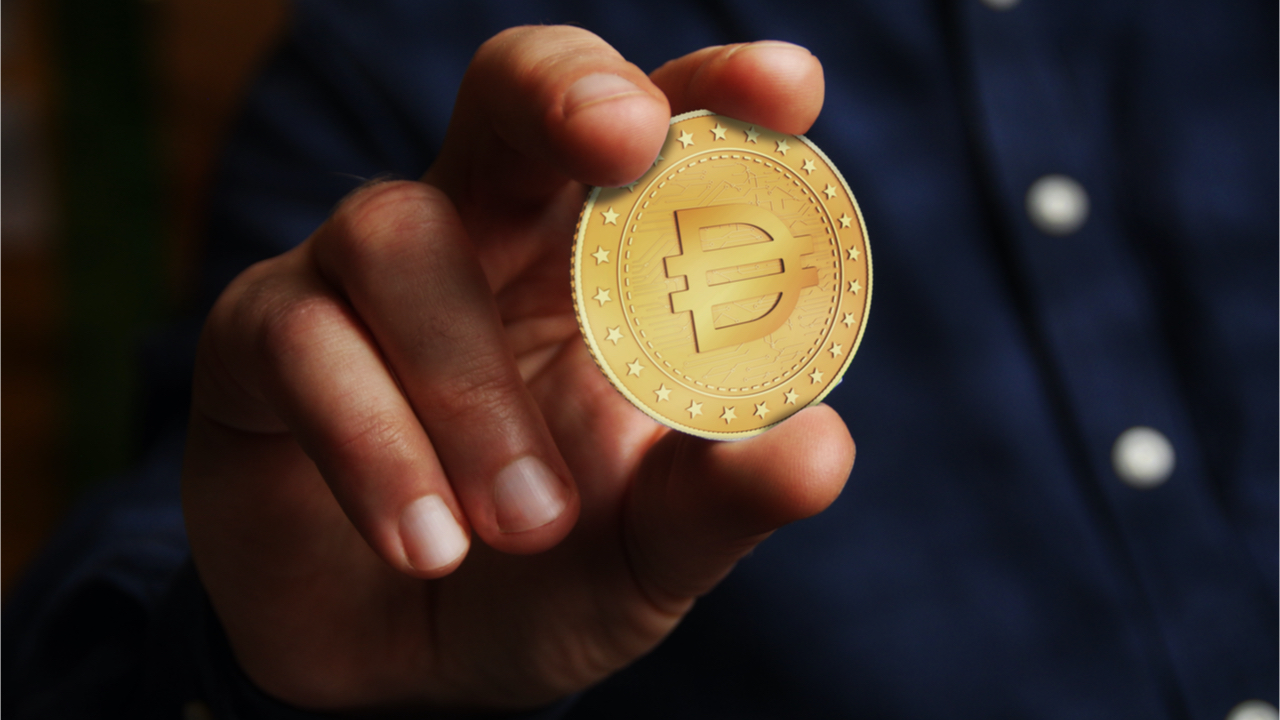
George Spencer
Dai (DAI): Everything You Need to Know

Dai is a stablecoin created by the Maker’s (MKR) Dai System, which adjusts to changing market conditions and maintains its value against major global currencies through margin trading. Dai is unique among popular USD-backed stablecoins in that it is backed by publicly viewable crypto collaterals on the Ethereum network. Here’s everything you need to know about the stablecoin and what sets it apart from the others.
What it is
Dai is a stablecoin whose value is determined by the value of the US dollar. DAI’s value is managed by MakerDAO, its decentralized governance community, in order to preserve price stability. While actual DAI stablecoins are created using the Maker Protocol platform, which accepts a variety of cryptocurrencies as collateral, the stablecoin may also be purchased using fiat money (such as the US dollar) on most regulated crypto exchanges such as Coinbase and Kraken. Dai is the first stable cryptocurrency that is decentralized and collateralized.
History
Rune Christensen, a developer, launched the Maker Foundation in 2014, which later became DAI. The Maker Protocol is an open-source project that was designed as a decentralized response to the time’s contentious centralized stablecoin systems. It was formally introduced on the Maker Protocol in 2017, created as a way to provide a non-volatile, reliable, and safe lending asset for enterprises and people alike, all while maintaining decentralization. Since launching the Maker Protocol, the Maker Foundation has handed over complete control to MakerDAO, a decentralized autonomous entity that currently oversees the entire Maker Protocol.
How it Works
Dai is a stablecoin that is collateralized by Ether, allowing Ether holders to produce the cryptocurrency using the MakerDAO DApp. To do so, you’ll need to send Ether to a collateralized debt position first (CDP). In exchange, you’ll get a piece of it. A CDP is a blockchain-based smart contract that governs Dai issuance and redemption. If you want to retrieve your Ether back after getting Dai for ETH, you must reimburse the one you borrowed.
As you can see, Dai is essentially a loan secured by Ethereum. MakerDAO allows ETH users to seek Dai loans. To begin, users must convert their ETH holdings to WETH (Wrapped Ethereum), an ERC-20 token. As a result, WETH joins the Ethereum pool, which serves as collateral for any tokens created. DAI is frequently over-collateralized to avoid liquidation because to the volatile nature of the assets being collateralized.
Users must deposit $200 in ETH to unlock $100 DAI, for example, providing a type of volatility cushion. This manner, even if the price of ETH falls by 25%, the $100 DAI loan will still be reimbursed by $150 in ETH. The user must refund the DAI that was lent together with an extra charge to regain their collateralized assets. Despite the fact that this description of Dai’s process appears oversimplified, 99 percent of users will not have to deal with the complexity of issuing the stablecoin and will be able to acquire it simply on an exchange.
Where to Buy
- Atomars
- BTC-Hit
- Coinhub
- Ethfinex, Bitfinex
- Kyber Network, Coinsuper
- Bancor
- Relay of Radar
- Exmo
- Gate.io
Conclusion
DAI offers a great deal of flexibility and usefulness, as well as the price stability of the US dollar. If you acquire DAI, you may utilize it in a variety of ways on the Ethereum network, including:
-Interest is generated by staking idle coins.
-Using it to purchase other currencies
-Investing in it as a safe haven for earnings from other token sales
-Purchases made in-game
If you borrow the stablecoin via the Maker Protocol, one disadvantage is the risk of losing your overcollateralized asset. Otherwise, the benefit of this one-of-a-kind commodity gives it a simple way to get your feet wet in crypto by way of a feasible investment worth seriously considering.
Latest
Altcoins
09 May 2024
Altcoins
19 Apr 2024
Altcoins
16 Jan 2024
Altcoins
31 Aug 2023
Altcoins
24 Jun 2023
Altcoins
24 Jun 2023













